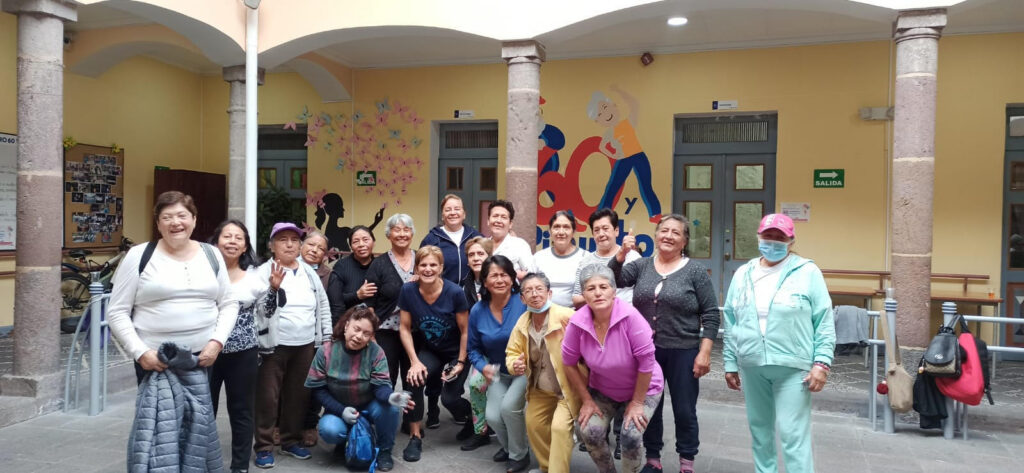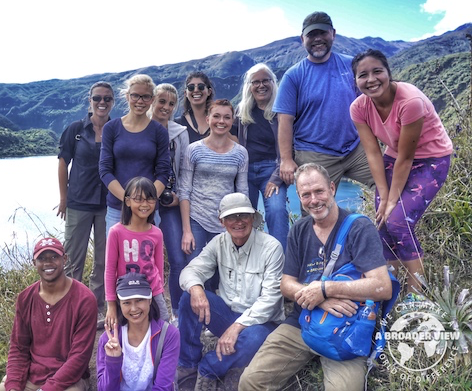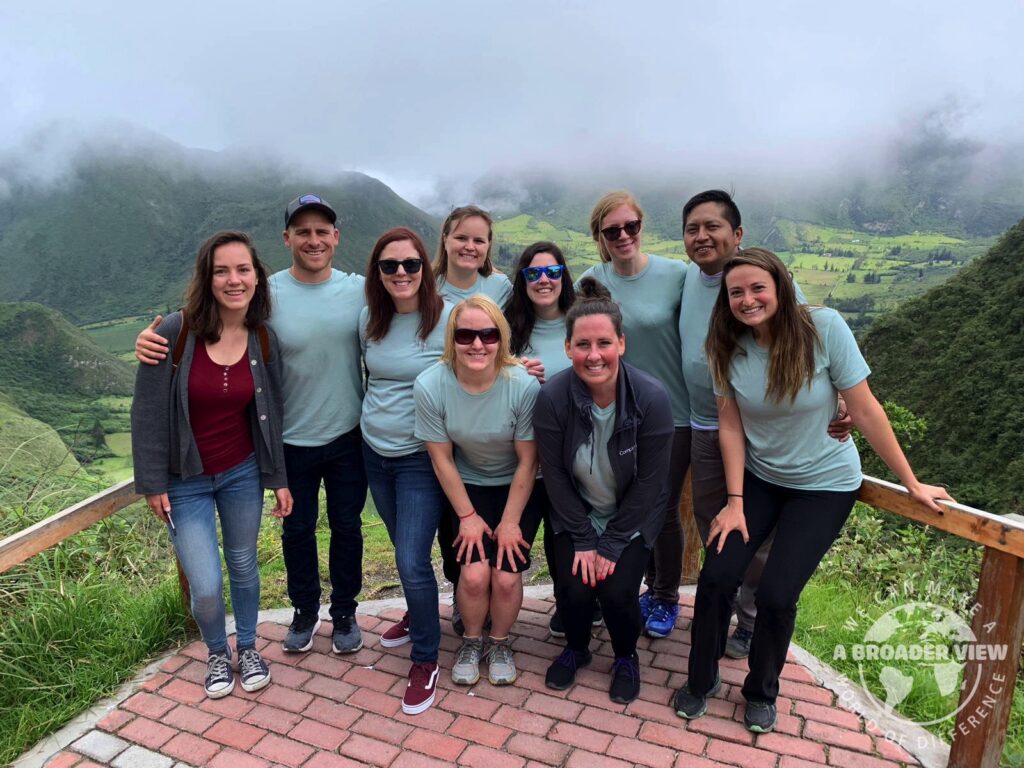Green Globe-Trotting: A Guide to Sustainable and Eco-Friendly Volunteering
Are you passionate about traveling and making a positive impact on the world? Sustainable and eco-friendly volunteering offers a unique opportunity to combine your love for exploration with your desire to contribute to the planet’s well-being.
In this guide, we will delve into the world of eco-friendly volunteering, understanding its significance, how to choose the right program, preparation and planning, eco-friendly accommodation and transportation, practicing sustainability, engaging with local communities, reflecting on the experience, and concluding with the importance of this incredible journey.
Volunteering has long been a popular way for travelers to immerse themselves in different cultures and give back to the communities they visit. However, in recent years, there has been a growing awareness of the impact that these activities can have on the environment and local communities. Sustainable and eco-friendly volunteering aims to minimize these negative effects while maximizing the positive contributions made by volunteers.

Throughout this guide, we will explore various aspects of sustainable and eco-friendly volunteering, equipping you with the knowledge and tools to make responsible choices during your travels. From understanding the importance of eco-friendly practices to engaging with local communities in a respectful manner, this guide will help you become a conscientious and environmentally conscious volunteer.
So, whether you’re an experienced traveler looking to make your journeys more sustainable or someone embarking on their first volunteer adventure, this guide is here to help you navigate the world of green globe-trotting. Get ready to embark on a journey that not only enriches your own life but also contributes to a better, more sustainable world for all. Let’s dive in and discover the wonders of sustainable and eco-friendly volunteering together.
Understanding Sustainable and Eco-Friendly Volunteering
Defining Sustainable Volunteering:
Sustainable volunteering refers to participating in volunteer activities that minimize negative impacts on the environment and maximize positive contributions to local communities and ecosystems. It focuses on promoting long-term social, economic, and environmental sustainability.
Sustainable volunteering aims to balance the well-being of the community, the preservation of natural resources, and the promotion of cultural diversity. It involves actively engaging in projects and initiatives that meet present needs without compromising the ability of future generations to meet their own needs.
The Importance of Eco-Friendly Practices:
Eco-friendly practices are essential in sustainable volunteering as they protect the environment and minimize the ecological footprint of volunteer activities. By adopting eco-friendly practices, volunteers ensure that their actions contribute to the conservation and protection of natural resources, ecosystems, and biodiversity.
Eco-friendly practices in volunteering include:
- Minimizing Waste: Use reusable items, avoid single-use plastics, and properly dispose of waste through recycling or composting.
- Conserving Energy: Be mindful of energy consumption by turning off lights and appliances, using energy-efficient transportation, and choosing accommodations that prioritize energy conservation.
- Promoting Sustainable Food Choices: Opt for locally sourced, organic, and seasonal food options to support local farmers, reduce carbon footprint, and promote sustainable food systems.
- Respecting Wildlife: Observe animals from a safe distance in their natural habitats to minimize stress and disruption to their behaviors.
- Using Eco-Friendly Products: Use environmentally friendly cleaning and personal care products that are free from harmful chemicals and toxins.
Implementing eco-friendly practices allows volunteers to make a positive impact on the environment and contribute to the overall sustainability of their volunteering efforts. It also sets a good example for others and encourages the adoption of sustainable behaviors in the local communities they work with.
Understanding sustainable and eco-friendly volunteering involves recognizing the importance of minimizing negative environmental impacts while maximizing positive contributions to local communities and ecosystems. By adopting eco-friendly practices, volunteers can ensure that their actions align with sustainable principles and contribute to the long-term well-being of both people and the planet.

Choosing the Right Volunteer Program
When it comes to sustainable and eco-friendly volunteering, choosing the right program is essential. Not all volunteer organizations and projects prioritize environmental conservation and community benefits, so it’s important to do thorough research before committing your time and resources.
Here are some key factors to consider when selecting a volunteer program:
1. Researching Organizations and Projects:
Before choosing a volunteer program, spend time researching different organizations and projects. Look for organizations that have a strong commitment to sustainability and eco-friendly practices. Check if they have a clear mission statement and goals that align with environmental conservation and community development. Read reviews and testimonials from previous volunteers to get a sense of their experiences.
2. Assessing Environmental Impact and Local Community Benefits:
One of the main goals of sustainable volunteering is to have a positive impact on the environment and local communities. When considering a volunteer program, assess how their projects contribute to environmental conservation and whether they have a positive impact on the local community. Look for programs that prioritize reforestation, wildlife conservation, sustainable agriculture, or community development initiatives.
3. Considering Personal Skills and Interests:
While choosing a volunteer program, it’s important to consider your own skills and interests. Identify the areas where you can contribute the most. For example, if you have a background in education, you might be interested in volunteering to teach children in a rural community. If you have expertise in eco-tourism or sustainable construction, look for programs that focus on those areas. Choosing a program that aligns with your skills and interests will not only make your experience more fulfilling but also ensure that your contributions are meaningful.
4. Evaluating Program Costs and Duration:
Consider the costs and duration of the volunteer program. Some programs may require a fee to cover accommodation, meals, and administration costs. While it’s understandable that volunteer organizations need funds to sustain their initiatives, make sure to evaluate the transparency and fairness of the fee structure. Additionally, consider the duration of the program and whether it aligns with your availability. Some programs may require a minimum commitment period, so make sure to factor that into your decision-making process.
5. Checking Safety and Support Measures:
Your safety and well-being should be a top priority when choosing a volunteer program. Check if the organization has safety protocols in place and if they provide support and guidance throughout your volunteering experience. Look for programs that have dedicated staff to assist volunteers and ensure their well-being. Also, consider if the program provides any training or orientation sessions to prepare you for the work you’ll be doing.
By taking these factors into account, you can choose a volunteer program that aligns with your values and goals for sustainable and eco-friendly volunteering. Remember, thorough research and careful consideration will help ensure that your volunteering experience is both meaningful and impactful.
Preparation and Planning
Understanding Local Culture and Customs
- Research and understand the local culture and customs of the destination.
- Be respectful and mindful of local traditions and practices.
- Familiarize yourself with the local customs to avoid accidentally offending or disrespecting the local community.
Learning Basic Language Skills
- Learning basic language skills can enhance the volunteering experience.
- Communicating in the local language helps build stronger connections and relationships.
- It also helps navigate surroundings and understand important information effectively.
Packing Responsibly
- Pack responsibly by bringing only essentials and avoiding unnecessary items.
- Tips for packing responsibly:
- Pack reusable and eco-friendly items (water bottles, food containers, utensils) to reduce plastic waste.
- Choose eco-friendly toiletries (biodegradable soaps, shampoos, toothpaste) and minimize packaging waste.
- Pack appropriate clothing for local climate and culture.
- Dress modestly and respectfully in conservative communities.
- Minimize use of energy-consuming electronics and focus on immersing in the local environment.
By understanding local culture and customs, learning basic language skills, and packing responsibly, volunteers can have a successful and meaningful sustainable and eco-friendly volunteering experience that respects the environment, the local community, and themselves.
Eco-Friendly Accommodation and Transportation
When planning a sustainable and eco-friendly volunteering trip, it’s important to consider your accommodation and transportation choices. Choosing green accommodation and minimizing your travel-related carbon footprint are key components of responsible travel.

Opting for Green Accommodation
Selecting eco-friendly accommodation is crucial for sustainable travel. Look for accommodations that prioritize sustainability and have implemented eco-friendly practices. Consider options that include:
- Energy-efficient systems: Look for accommodations that use energy-efficient appliances and lighting systems to reduce their carbon footprint.
- Water conservation: Choose places that have implemented water-saving measures, such as low-flow toilets and showers, and greywater recycling systems.
- Renewable energy sources: Seek accommodations that use renewable energy sources like solar or wind power to minimize environmental impact.
- Sustainable building materials: Some accommodations prioritize using sustainable and locally sourced building materials, which helps reduce the environmental impact of construction.
By choosing green accommodations, you support businesses that are committed to reducing their environmental footprint and promoting sustainable practices.
Minimizing Travel-related Carbon Footprint
Transportation is one of the biggest contributors to carbon emissions in the travel industry. Here are some ways to minimize your travel-related carbon footprint:
- Choose eco-friendly transportation: Opt for public transportation options like buses or trains whenever possible, as they generally have a lower carbon footprint than private vehicles.
- Carpooling or ridesharing: If public transportation is not available, consider carpooling or ridesharing with fellow volunteers or locals to reduce the number of vehicles on the road.
- Offset carbon emissions: Purchase carbon offsets to compensate for the carbon emissions generated during your journey. These offsets fund projects that aim to reduce greenhouse gas emissions.
- Avoid unnecessary air travel: Whenever possible, choose alternative modes of transportation, such as trains or buses, especially for shorter distances, as air travel has a significant impact on the environment.
By being conscious of your transportation choices, you can significantly reduce your contribution to carbon emissions and help protect the environment.
Utilizing Sustainable Transport Options
In addition to minimizing your carbon footprint, consider utilizing sustainable transport options at your volunteering destination. This can include:
- Cycling or walking: If your accommodation and volunteering project are within a reasonable distance, consider cycling or walking to reduce the need for motorized transportation.
- Public transportation: Explore the local public transportation options, such as buses or trains, to get around and explore the community.
- Renting eco-friendly vehicles: If you need to rent a vehicle, look for companies that offer electric or hybrid options. These vehicles have lower emissions and are more environmentally friendly.
By choosing sustainable transport options, you can contribute to reducing air and noise pollution and minimize the impact on local ecosystems.
In conclusion, when it comes to eco-friendly accommodation and transportation during your sustainable volunteering journey:
- Choose accommodations that prioritize sustainability and have implemented eco-friendly practices.
- Minimize your travel-related carbon footprint by opting for public transportation, carpooling, and offsetting carbon emissions.
- Utilize sustainable transport options like cycling or walking, public transportation, or renting eco-friendly vehicles.
By taking these steps, you can actively contribute to a more sustainable and eco-friendly travel experience.
Practicing Sustainable Volunteering
Sustainable volunteering is about making a positive and lasting impact on both the environment and local communities. Here are some important practices to keep in mind while volunteering:
- Respecting Local Flora and Fauna:
- Follow guidelines provided by project coordinators.
- Avoid disturbing natural habitats.
- Be mindful of footpaths and trails.
- Supporting Sustainable Agriculture and Conservation Efforts:
- Engage in activities that promote sustainable farming practices and conservation efforts.
- Plant trees, maintain organic gardens, assist with wildlife surveys.
- Reducing Waste and Promoting Recycling:
- Minimize waste generation.
- Use reusable bottles and containers.
- Choose products with minimal packaging.
- Properly dispose of waste following local guidelines.
- Participate in recycling programs if available.
- Promoting Sustainable Energy Usage:
- Conserve energy.
- Switch off lights and electrical appliances when not in use.
- Use energy-efficient alternatives when possible.
- Using Environmentally-Friendly Products:
- Choose biodegradable toiletries and eco-friendly cleaning supplies.
- Avoid products containing harmful chemicals.
- Responsible Waste Management:
- Dispose and recycle waste properly.
- Work with local community members to find sustainable solutions for waste management.
- Respecting Local Traditions and Customs:
- Understand and respect local traditions and customs.
- Foster a positive and respectful cultural exchange.
- Supporting Local Businesses and Artisans:
- Purchase products and services from local businesses and artisans.
- Contribute to the local economy and promote sustainable economic growth.
- Educating and Empowering Local Communities:
- Share knowledge and skills with the local community.
- Conduct workshops or training sessions for personal and professional development.

By practicing sustainable volunteering, you can make a positive impact and inspire change. Your efforts can contribute to a more sustainable future in volunteer tourism. Remember, small actions can make a big difference!
Engaging with Local Communities
Engaging with local communities is an important aspect of sustainable and eco-friendly volunteering. It allows volunteers to form meaningful connections, promote cultural exchange, and support local businesses and artisans. By actively engaging with local communities, volunteers can make a positive and lasting impact.
Responsible Cultural Exchange:
One key aspect of engaging with local communities is practicing responsible cultural exchange. This means respecting local customs, traditions, and beliefs. Volunteers should approach the community with an open mind and a willingness to learn about their way of life. Being sensitive and mindful of cultural differences is essential to avoid unintentional disrespect or offense. By actively engaging with the local culture, volunteers can promote mutual understanding and appreciation.
Supporting Local Businesses and Artisans:
Engaging with local communities also involves supporting local businesses and artisans. Volunteers should prioritize purchasing goods and services from community-based initiatives instead of larger corporations or chains. This promotes economic sustainability within the local community by ensuring that the benefits of volunteering directly reach those who need it the most. Supporting local businesses and artisans helps to preserve and promote traditional handicrafts and cultural practices, while also contributing to the local economy.
Educating and Empowering Local Communities:
Another way to engage with local communities is by educating and empowering the residents. Volunteers can organize workshops, skill development programs, and educational sessions for community members. By sharing their knowledge and expertise, volunteers help to equip locals with new skills and empower them to improve their quality of life. This can range from teaching English to providing training on sustainable farming practices or environmental conservation. Through education and empowerment, volunteers can create a lasting impact and enable local communities to become self-sufficient and resilient.
In conclusion, engaging with local communities is crucial in sustainable and eco-friendly volunteering. It allows for cultural exchange, promotes positive change, and contributes to the long-term sustainability of the communities volunteers work with. By practicing responsible cultural exchange, supporting local businesses and artisans, and educating and empowering local communities, volunteers can leave a lasting legacy of positive impact.
Reflecting on the Experience
Reflecting on the experience of sustainable and eco-friendly volunteering is important for understanding the impact and personal growth that comes with these activities. It allows volunteers to evaluate their contributions, assess the benefits they have gained, and share their experiences to inspire others.
Evaluating Personal Impact and Growth:
To reflect on the experience of sustainable and eco-friendly volunteering, volunteers can ask themselves these questions:
- How have my actions contributed to the local community and environment?
- What new skills or knowledge have I gained?
- How has this experience shaped my perspective on sustainable practices?
- In what ways have I made a positive difference?
Evaluating personal impact and growth helps volunteers understand the value of their efforts and motivates them to continue supporting eco-friendly practices.
Sharing Experiences and Raising Awareness:
Volunteers can inspire others by sharing their experiences and raising awareness about sustainable and eco-friendly volunteering. They can:
- Document their experiences through writing, photos, and videos.
- Share their stories on social media, blogs, or forums.
- Speak at events or collaborate with organizations to spread their achievements.
By sharing their experiences, volunteers not only create dialogue but also encourage others to get involved in sustainable volunteering.
Reflecting on the experience of sustainable and eco-friendly volunteering is essential. It allows volunteers to evaluate their personal growth, assess their impact, and inspire others. Through reflection, volunteers can sow the seeds of positive change and encourage others to join them in creating a greener and more sustainable world.

Conclusion
In conclusion, sustainable and eco-friendly volunteering offers a unique opportunity to make a positive impact on both the environment and local communities while simultaneously gaining a rewarding and enriching experience. By understanding the importance of sustainable practices and choosing the right volunteer program, individuals can contribute to the preservation of natural resources and the well-being of local populations.
Preparation and planning: Preparation and planning are crucial steps in ensuring a successful and sustainable volunteering experience.
- Familiarize oneself with the local culture and customs.
- Learn basic language skills.
- Pack responsibly.
Accommodations and transportation: Opting for eco-friendly accommodations and utilizing sustainable transportation options further reduces one’s carbon footprint and supports responsible tourism.
Practicing sustainable volunteering: Once in the field, practicing sustainable volunteering involves various actions, such as:
- Respecting local flora and fauna.
- Supporting sustainable agriculture and conservation efforts.
- Actively reducing waste and promoting recycling.
Engaging with local communities: Engaging with local communities is another essential aspect of sustainable volunteering.
- Engage in responsible cultural exchange.
- Support local businesses and artisans.
- Educate and empower local communities.
Reflecting on the experience: Reflecting on the experience is important for personal growth and evaluating individual impact.
- Assess personal growth.
- Share experiences.
- Raise awareness among friends, family, and the wider community.
In conclusion, sustainable and eco-friendly volunteering is a powerful way to explore the world, connect with different cultures, and contribute to a more sustainable and equitable future. It is a chance to make a difference while also gaining valuable skills and experiences. By following the principles of sustainable volunteering and engaging in thoughtful and responsible actions, individuals can make a lasting impact and create meaningful change. So, embark on your green globe-trotting journey today and be part of the global movement towards a more sustainable world!
Frequently Asked Questions
- What is sustainable volunteering?Sustainable volunteering refers to participating in volunteer programs or projects that have a positive impact on the environment, local communities, and wildlife, while ensuring the long-term sustainability and preservation of natural resources and cultural heritage.
- How can sustainable volunteering benefit the environment?Sustainable volunteering can benefit the environment by promoting conservation efforts, engaging in reforestation and ecological restoration projects, raising awareness about environmental issues, and supporting sustainable practices within local communities.
- How do I find eco-friendly volunteering opportunities?To find eco-friendly volunteering opportunities, you can research and choose organizations that have a strong focus on sustainability, conservation, and environmental stewardship. Look for programs that prioritize minimizing environmental impact, support local communities, and have transparent ethical guidelines.
- Do I need any specific skills to engage in sustainable volunteering?While specific skills may be required for certain projects, many sustainable volunteering opportunities are open to individuals with a passion for the environment and a willingness to learn. Basic knowledge of conservation practices or eco-friendly initiatives can be helpful but is not always necessary.
- What are some examples of sustainable volunteering activities?Examples of sustainable volunteering activities include wildlife conservation projects, organic farming or permaculture initiatives, beach clean-ups, sustainable building or renewable energy projects, environmental education and awareness campaigns, and supporting local sustainable tourism initiatives.
-
Volunteering Abroad with Medical Missions: Make a Difference Today

Join medical group trips, Nurses Without Borders, and Dentists Without Borders to make a difference in underserved communities worldwide. Learn about the countries where these programs operate and read real-life experiences from volunteers. Volunteering overseas is an excellent opportunity to make a difference in the lives of others while experiencing new cultures and forging unforgettable…
-
Embrace Overseas Service | Transform Lives Through Global Volunteerism

International Volunteering: Discover Meaningful Travel and Transform Lives with A Broader View
-
A World of Opportunities: Unveiling the Benefits of International Volunteer Programs

Discover numerous benefits of international volunteer programs and unleash a world of rewarding opportunities with our in-depth guide.



